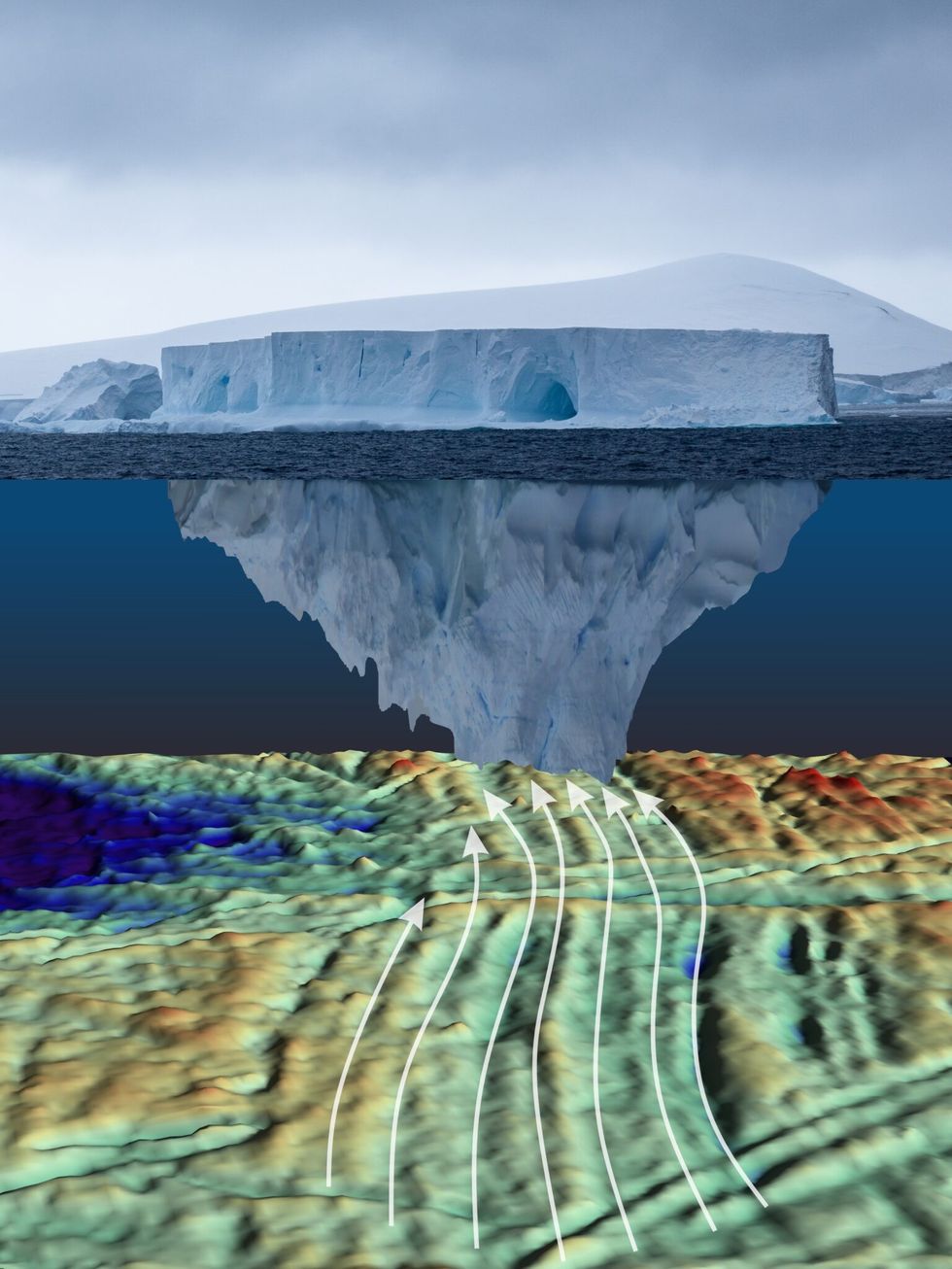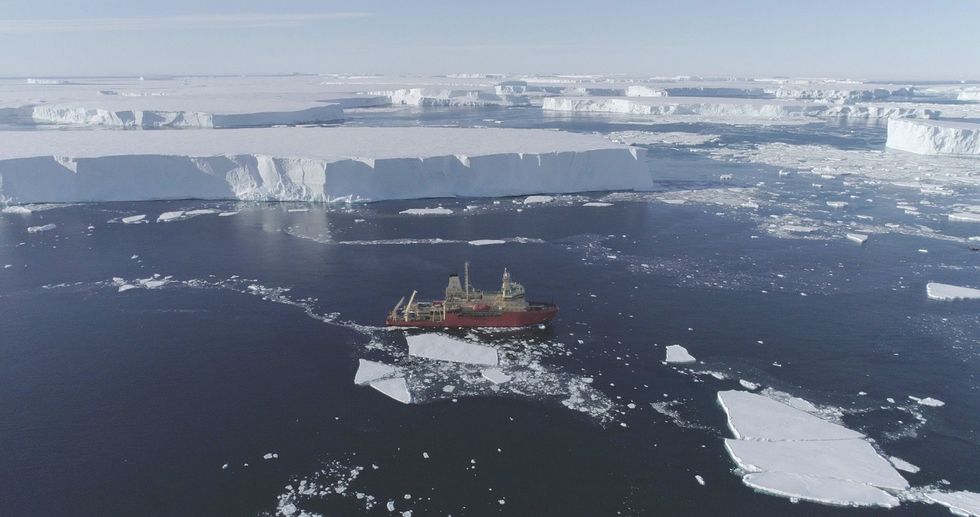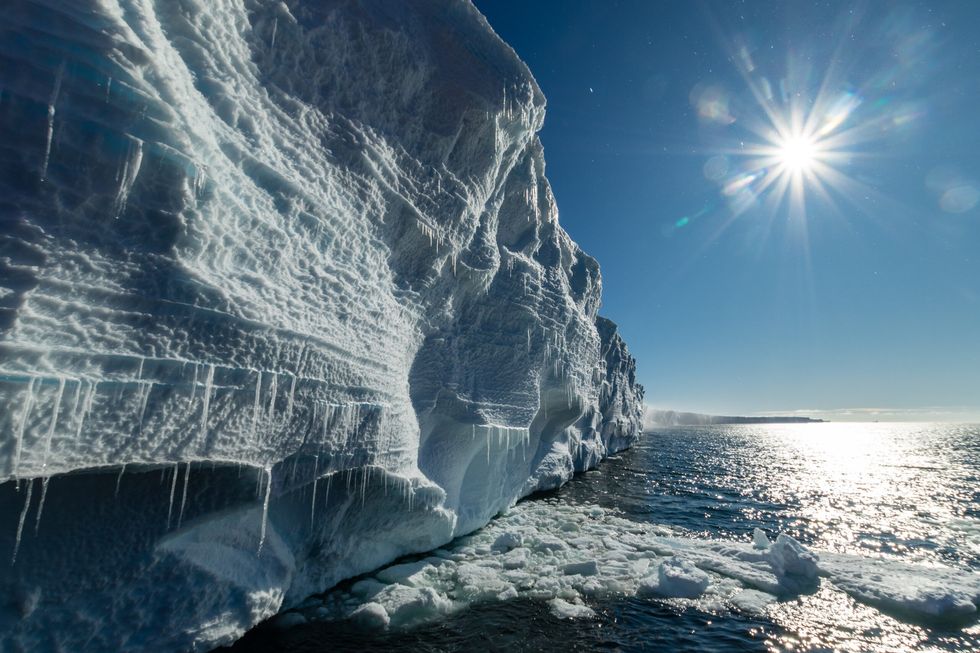WATCH: ’99.7% chance of alien life’, top scientist declares as three signs give cause for optimism: ‘That is good news’
GB NEWS
MRI-style scans of the sediment layers beneath the present-day seafloor have revealed deep comb-like grooves
Don't Miss
Most Read
Trending on GB News
Scientists have discovered that icebergs as large as cities once drifted off ancient Britain's coasts.
Researchers have found distinctive "scratch marks" on the floor of the North Sea, created by massive icebergs more than 18,000 years ago.
These gouges provide the first hard evidence that the British-Irish ice sheet produced bergs like these - the icy chunks were estimated to be several kilometres across and between 50-180 metres thick.
This means they would have covered areas comparable to medium-sized UK cities like Norwich or Cambridge - and are similar in size to some of the smaller icebergs found off present-day Antarctica.

MRI-style scans of the sediment layers beneath the present-day seafloor have revealed deep comb-like grooves
JAMES KIRKHAM/BRITISH ANTARCTIC SURVEY
The scientists used detailed 3D seismic data collected by oil and gas companies and wind turbine projects to search for these ancient icebergs.
This technique works like conducting an MRI scan of the sediment layers beneath the present-day seafloor, revealing deep, comb-like grooves.
Some of these scratch marks were found just 90 miles from Scotland's east coast.
"We found [evidence of] these gigantic tabular icebergs, which basically means the shape of a table, with incredibly wide and flat tops," said James Kirkham, a marine geophysicist at the British Antarctic Survey and lead author of the new study.
MORE BRITISH SCIENCE BREAKTHROUGHS:

US research ship RV Nathaniel B Palmer, seen next to fields of giant icebergs
JAMES KIRKHAM/BRITISH ANTARCTIC SURVEY

PICTURED: The edge of the Ekstrom Ice Shelf
JAMES KIRKHAM/BRITISH ANTARCTIC SURVEY
"These have not been seen before and it shows definitively that the UK had ice shelves, because that's the only way to produce these gigantic tabular icebergs."
By examining the changing scratch marks on the seafloor, researchers discovered a significant shift around 18,000 years ago, when the planet was gradually warming.
The production of giant bergs suddenly stopped and was replaced by more frequent smaller ones, indicating the ice shelves rapidly disintegrated during this period.
Dr Kirkham recalled witnessing a similar iceberg in Antarctica two years ago.
LATEST SCIENCE UPDATES FROM GB NEWS:

PICTURED: A large tabular iceberg in West Antarctica
JAMES KIRKHAM/BRITISH ANTARCTIC SURVEY
"Those of us working on this paper were standing together, gazing out onto this iceberg and thinking, 'Wow, that's probably a similar size iceberg to what was found off the shore of Scotland 18,000 years ago, right in front of us in Antarctica today.'"
While Professor Eric Rignot, glaciologist at the University of California, Irvine, noted the broader implications of these findings.
"These ocean records are fascinating and have implications for Antarctica, as they illustrate the fundamental role of ice shelves in buttressing the flow of continental ice into the ocean," he said.
He added that while ice shelf collapse is important, "the main forcing is warmer air temperature and warmer ocean temperature".








